This is just a basic buttermilk banana bread recipe, but I was feeling experimental so I sweetened it with 100% allulose. I've had excellent results baking with allulose. And while sugar is still the gold standard, it's nice to have found an alternative sweetener that actually tastes good.
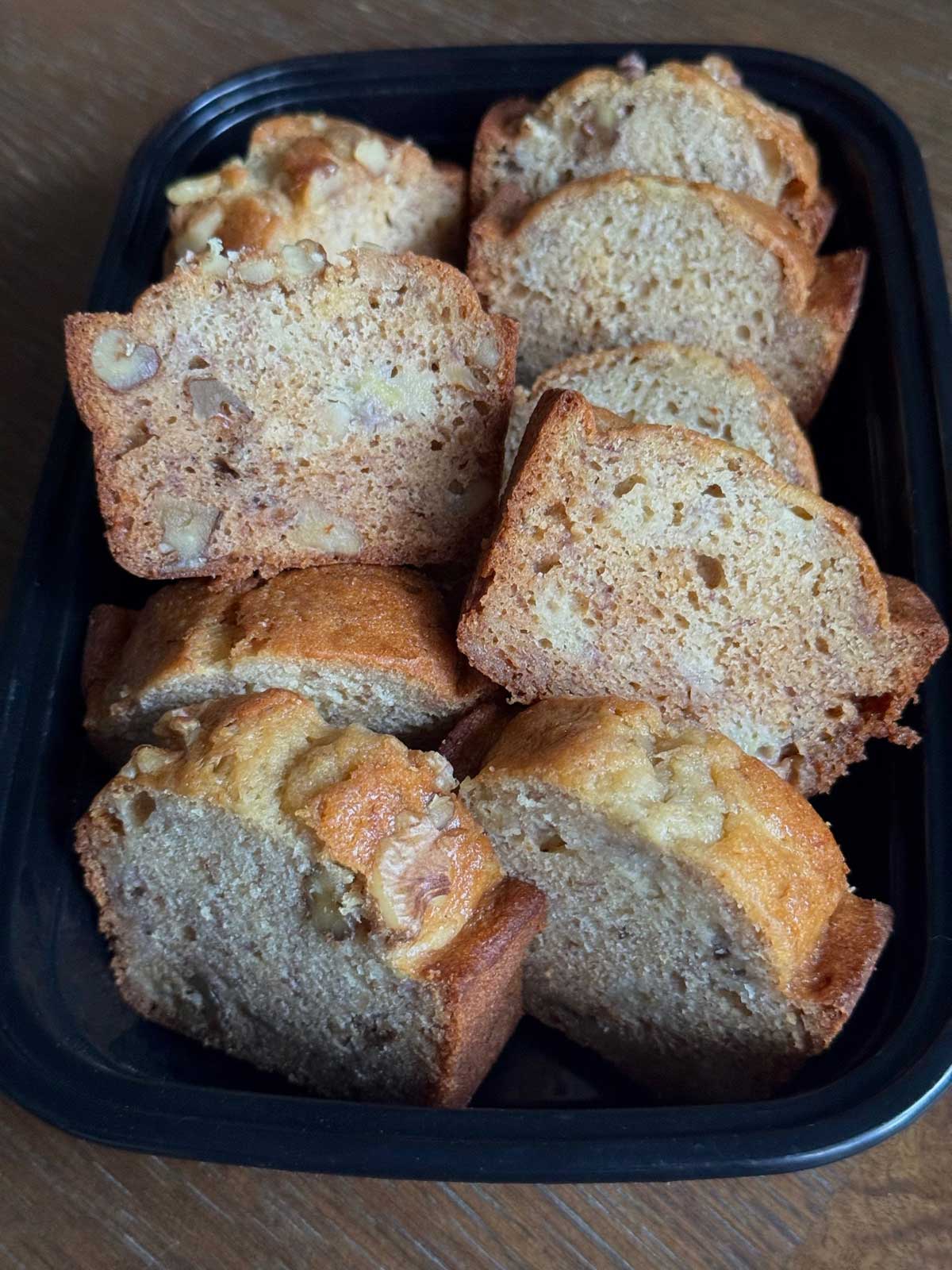
Allulose Texture and Flavor
Allulose has some limitations, though. The big one is it keeps things soft, but for banana bread that's more of a pro than a con. Texturally, the loaf has a little more chewiness to it. Some people find allulose to have a bitter aftertaste. I detect a little bitterness, but it's much more pleasant than the blast of cool-mouth-feel you get from erythritol. So you can try the buttermilk banana bread with allulose or make it the traditional way with sugar.
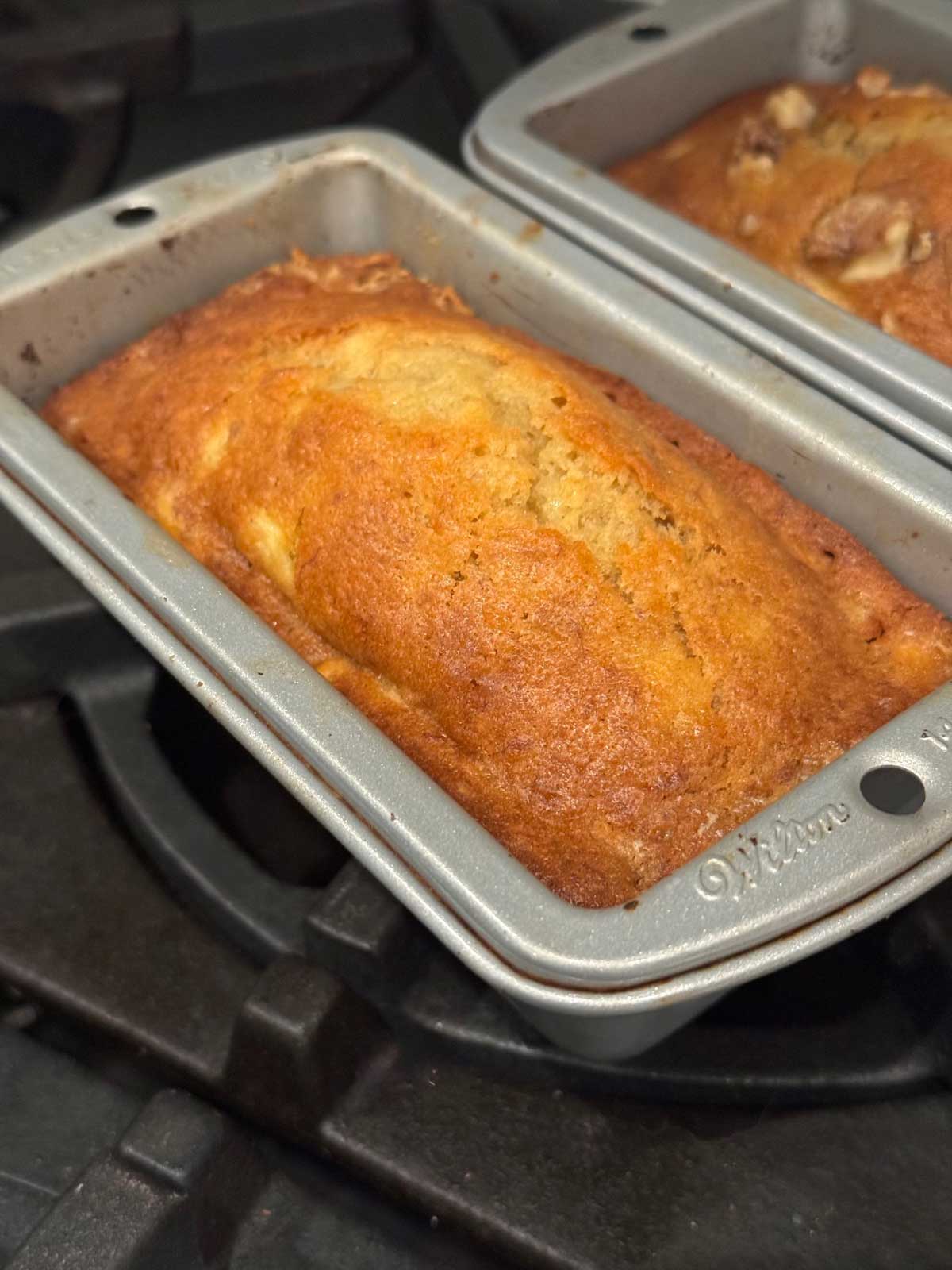
Buttermilk Banana Bread Notes
This is a typical American style basic banana bread, but it calls for butter instead of oil and requires creaming the butter and sugar together with an electric mixer. The dry ingredients are mixed together as usual and added alternately with the buttermilk, and the mashed bananas go in last. If you add the bananas too early, they may release moisture into the batter which can overhydrate the gluten. Adding them last helps keep the crumb light.
Tips For Baking Banana Bread With Allulose
If you decide to try this with allulose (I use Durelife brand), here are a few tips for baking with it.
- Allulose doesn't crystalize like table sugar, so baked goods almost always come out soft. If baking cookies or something crispy, it's best to use another type sweetener such as a erythritol or monk fruit blend.
- It's about 70% as sweet as sugar. I typically use 1 ⅓ cups allulose for every 1 cup of sugar.
- Sugar enhances other flavors, while allulose has a tendency to mute them. The quick fix is to just use a little more flavoring. For instance, if a recipe calls for vanilla and I'm baking with allulose, I'll use 1 ¼ to 1 ½ times the amount.
- Allulose caramelizes quickly and will cause baked good to brown more rapidly. If you don't want a very brown crust, lower the temperature by 25 degrees F. For banana bread, a brown crust is desirable, so I left the temperature at 350F.
Recipe
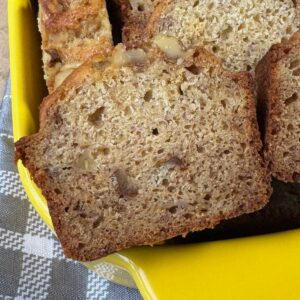
Buttermilk Banana Bread
Ingredients
- 2 cups all-purpose flour (250 grams)
- 1 teaspoon baking powder
- ½ teaspoon baking soda
- ½ teaspoon salt
- ¾ teaspoon cinnamon (optional) optional
- 1 cup granulated sugar or 1 ⅓ cups allulose (200 grams sugar )
- ½ cup unsalted butter, softened (114 grams)
- 1 teaspoon vanilla extract or 1 ½ if using allulose
- 2 large eggs, room temperature at room temperature
- 2-3 large ripe bananas, mashed to make 1 (240 grams)
- ½ cup buttermilk, room temperature
- 1 cup walnut pieces
Instructions
- Preheat the oven 350°F. Grease and flour an 8 ½ by 4 ½ inch pan or four mini loaf pans (around 3x5).
- Whisk together the flour, baking powder, baking soda, salt and cinnamon. Make sure all the ingredients are very thoroughly mixed at this point because the batter is thick and it's hard to mix without overbeating once the liquid is added. So really whisk the dry ingredients thoroughly.
- Combine the softened butter and sugar in the bowl of a stand mixer and beat until creamy. Scrape sides of bowl and add the eggs one at a time, beating just until blended. Beat in the vanilla
- Add the flour mixture and the buttermilk alternately, mixing with a heavy duty scraper until blended. Lastly, fold in the mashed bananas until evenly blended.
- Stir in the walnuts (if using).
- Transfer batter to loaf pan (or pans) and bake for about 60 minutes (test it after 60) for large loaf or 35 to 40 minutes for small. Check at 35 minutes.
- Let cool on a rack for 10 minutes. Loosen edges with a knife and let cool for another 30 minutes, then invert from pan and let cool completely.

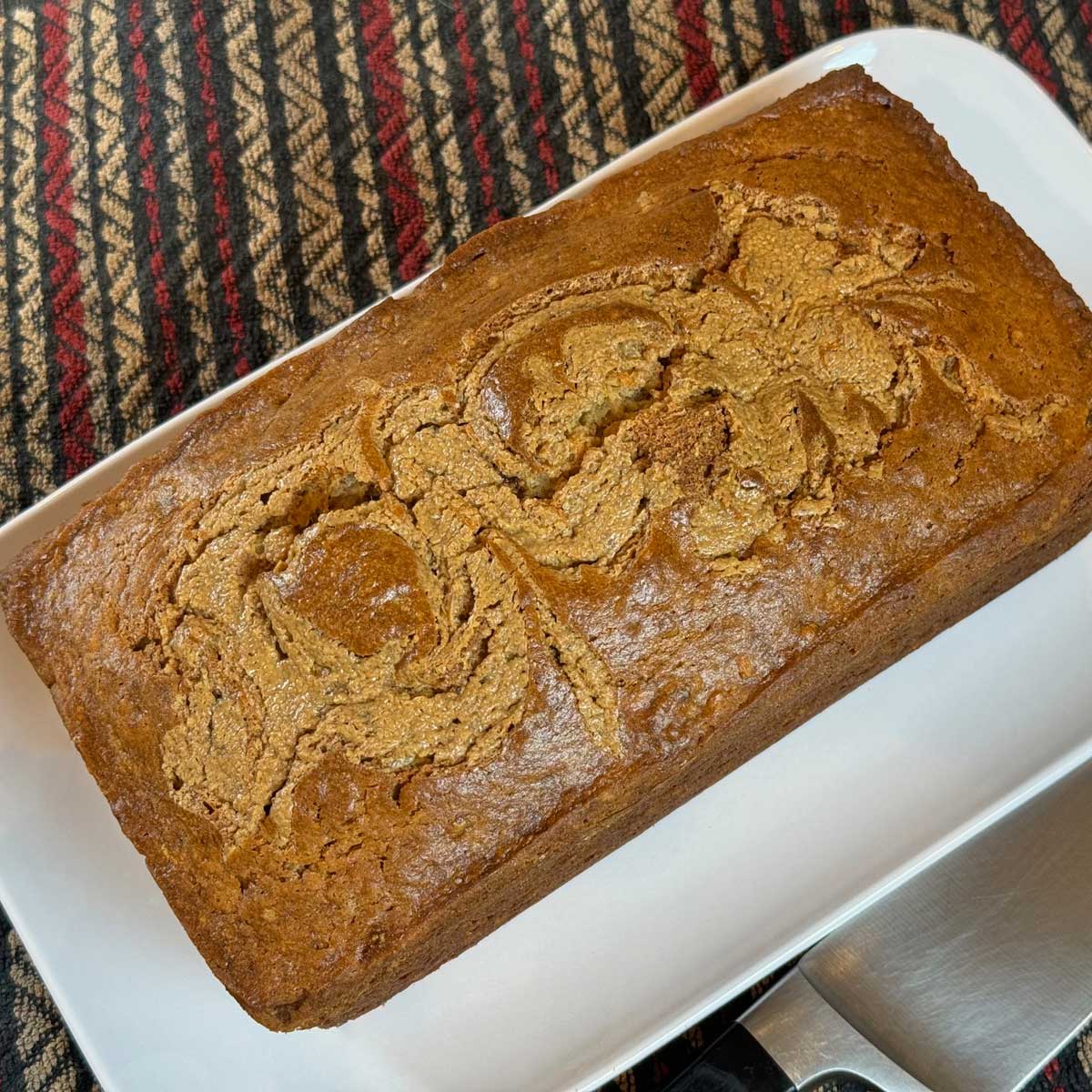
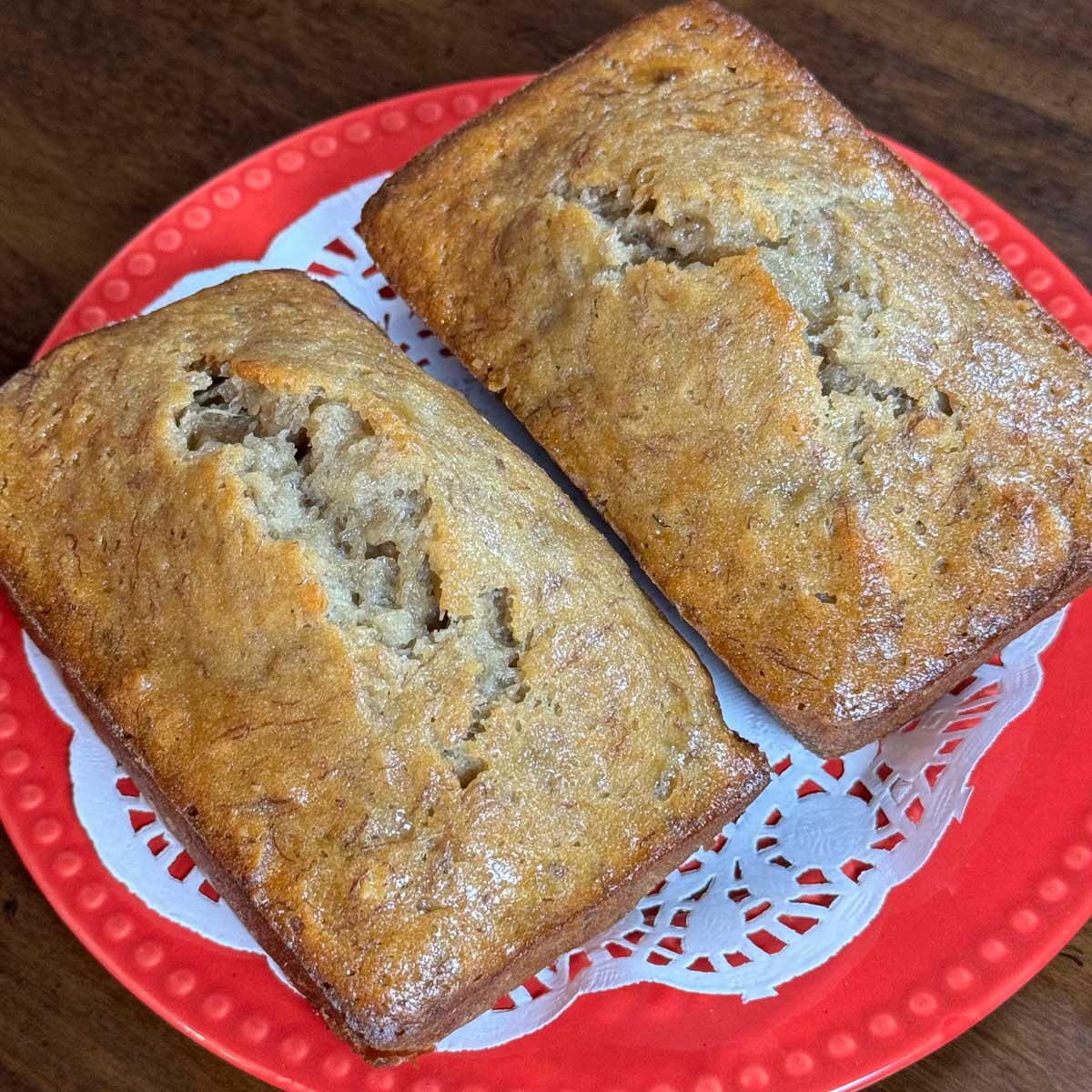
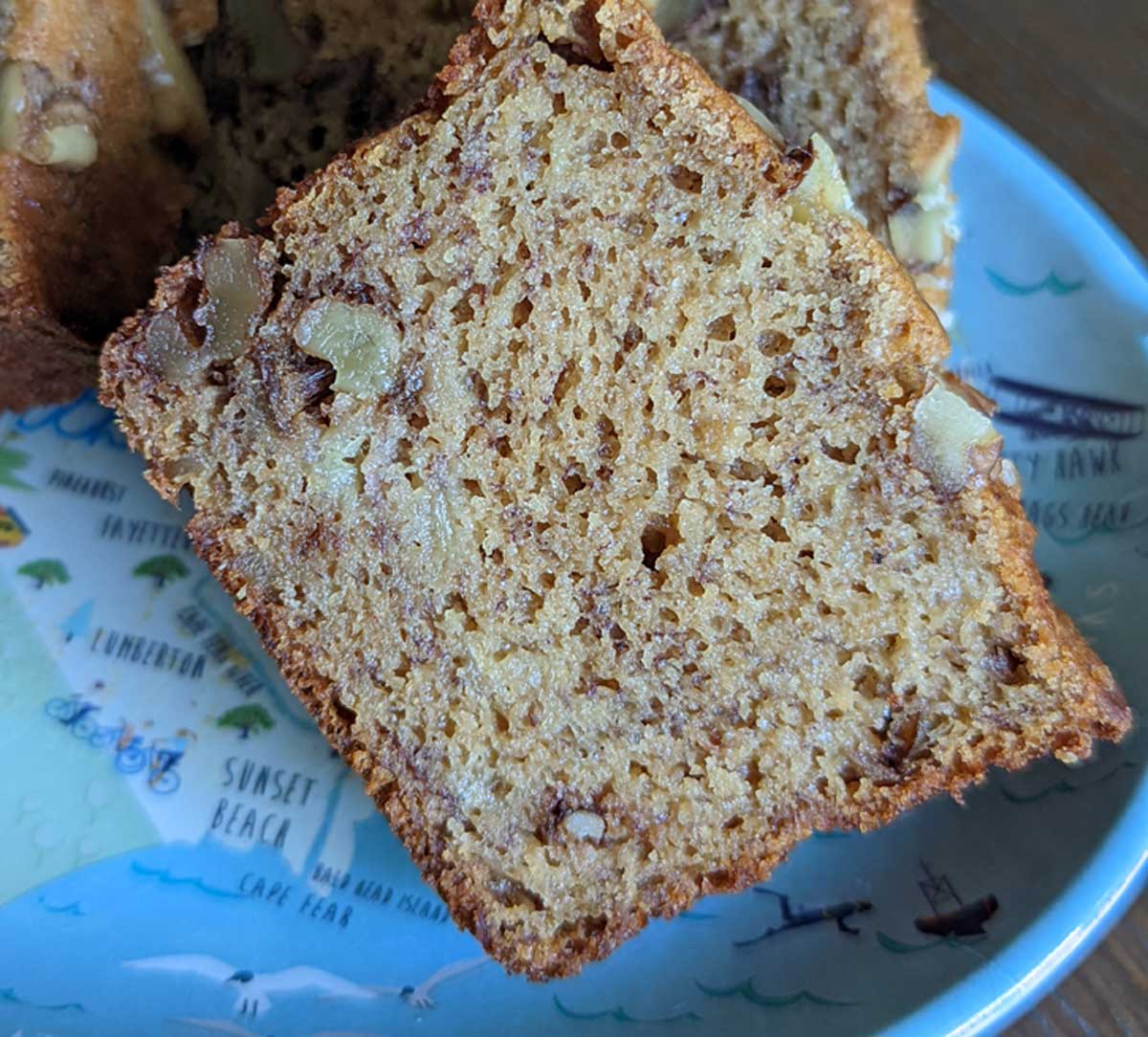
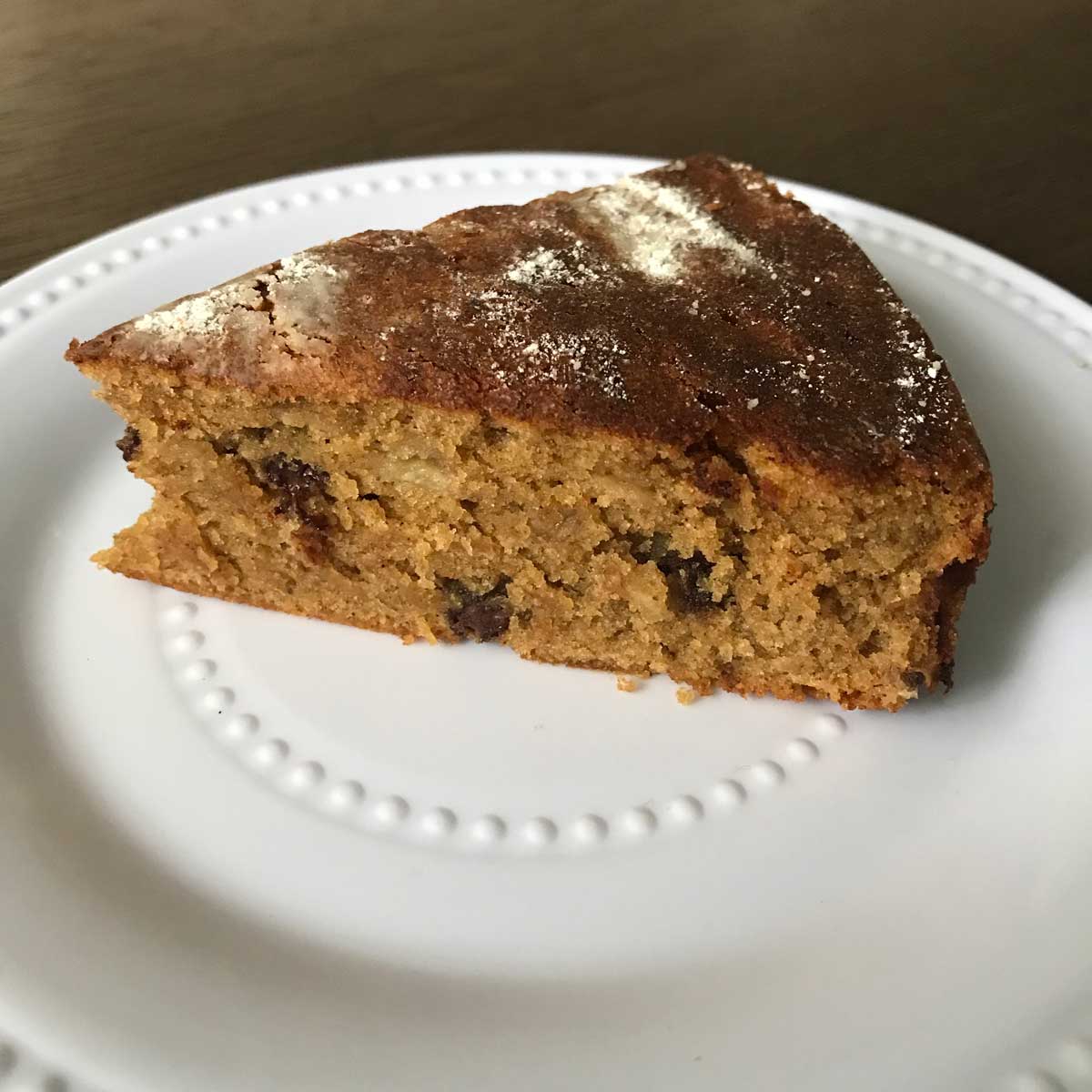
Leave a Reply